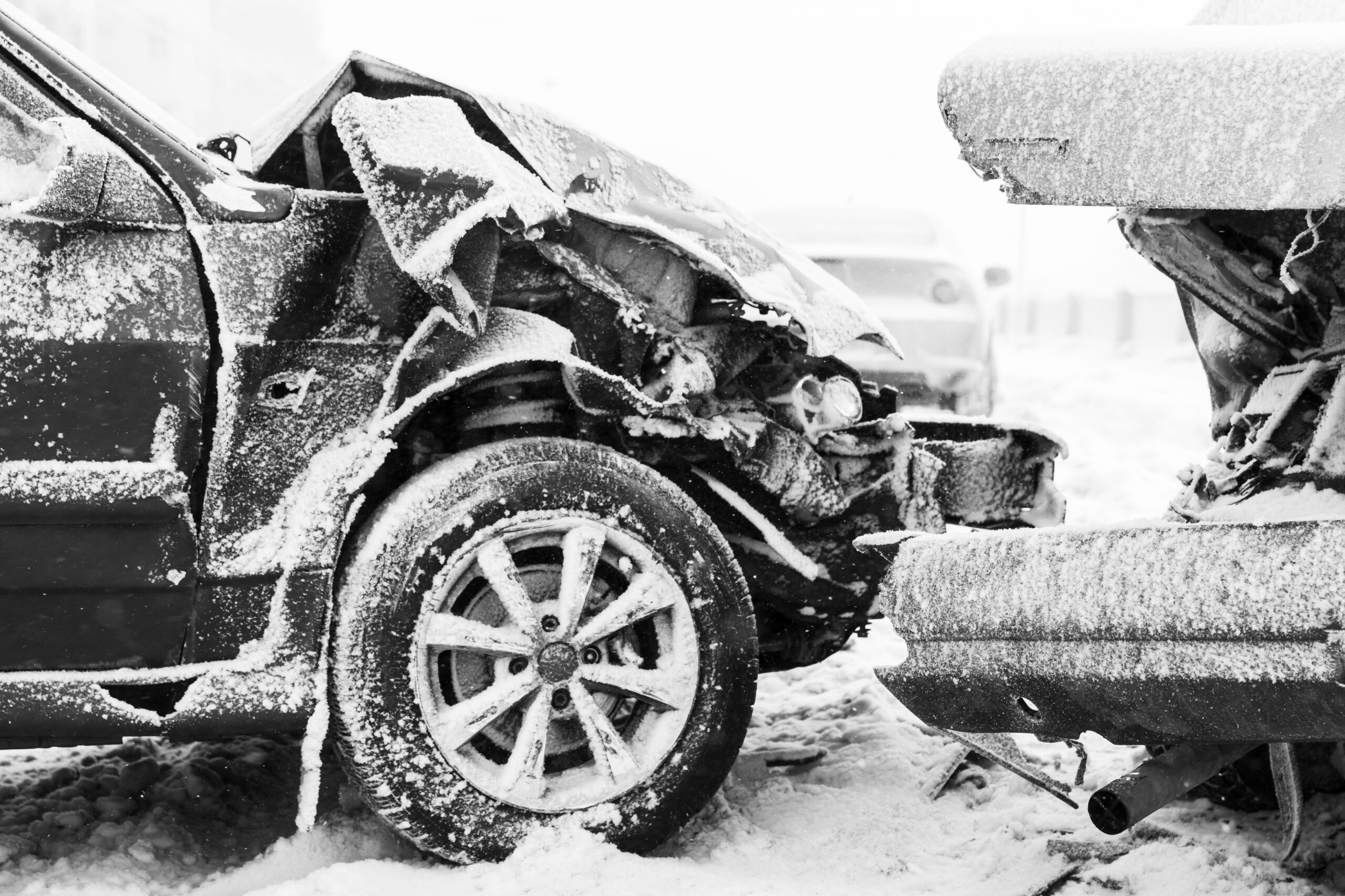Car Accident 2019 Statistics in the United States
Motor vehicle accidents continue to be one of the leading causes of accidental deaths and injuries in the United States. They are responsible for billions in property damage and other economic losses each year. If you or a relative suffered injuries or economic damages due to the negligence of another driver, an attorney can represent you in a personal injury claim to recover your losses. Contact the attorneys for auto accidents at Sweeney Merrigan Law, LLP for a free consultation about your recent crash. We can help you identify your options for legal recovery.
Typical Causes of Accidents that Result in Death
Car accidents happen for many reasons. Several federal agencies track and collate accident data so drivers can stay aware of the most dangerous factors on the road and hopefully avoid accidents. Some serious accidents result in the deaths of drivers, passengers, passersby, and pedestrians all over the country. The National Highway Traffic Safety Administration (NHTSA) reported in 2016 that passenger vehicle occupants were the most likely to suffer fatal injuries in auto accidents, representing about 36% of all motor vehicle accident fatalities that year.
The NHTSA also reported that fatality rates for various types of accidents have increased in recent years.
- From 2015 to 2016 fatal accidents involving an alcohol-impaired driver increased by nearly 2%.
- Motorcycle accident fatalities increased over 5% and 2016 saw the highest number of motorcycle accident fatalities since 2008.
- Pedestrian accident fatalities reached the highest recorded number since 1990 in 2016 with 492 deaths, a more than 9% increase from 2015.
- Bicyclist deaths also reached their highest point in 2016 since 1991 with an almost 2% increase from 2015.
- The fatality rate per 100 million vehicle miles traveled in the U.S. was 1.18 in 2016, an almost 3% increase from 2015.
- Alcohol-related accidents account for roughly 30% to 40% of all fatal car accidents in the United States.
- Speeding is a contributing factor in about one-third of all fatal vehicle accidents.
- Aggressive and reckless driving also contributes to about one-third of all vehicle accidents.
Of all the reasons fatal motor vehicle accidents happen, the top causes year after year continue to be alcohol, speeding, distraction, and aggressive driving.
Alcohol and Fatal Accidents
Driving under the influence (DUI) is extremely dangerous and a criminal offense in the United States. Alcohol impairs judgment, slows reaction times, and increases the risk of falling asleep or passing out behind the wheel. Impaired drivers often swerve in their lanes or into adjacent lanes, fail to stop in time to avoid hitting other vehicles, or make sudden movements that can cause them to lose control of their vehicles.
- In 2017, the rate of fatal vehicle accidents from DUI violations in the U.S. was 3.4 per 100 million vehicle miles traveled.
- Alcohol was involved in 29% of fatal accidents in the U.S. in 2017.
- Ten thousand eight hundred seventy-four people died in 2017 due to a driver with a blood-alcohol content (BAC) of .08% or higher. Sixty-eight percent of those deaths resulted from drivers with BAC of .15% or higher.
- About 10% of drunk driving fatalities in the U.S. include drivers and passengers under the age of 21.
Most states prosecute DUI offenses very aggressively. A driver arrested for DUI can face significant legal penalties including fines, jail time, loss of driving privileges, and mandatory drug and alcohol treatment or driver safety education. These penalties increase significantly if an impaired driver causes injuries or fatalities. The offender can also face liability for civil claims for damages from the victims of such accidents.
Crashes that Resulted in Fatalities and Non-Fatalities
Car accidents range in severity based on location, the speed of the vehicles involved, the actions of the drivers involved, and countless other factors. Generally, the risk of severe injury and fatal injury increases at higher speeds, but poor visibility and bad weather also increase the risk of serious accidents.
- More than six million car accidents occur each year in the U.S., and according to the NHTSA, about 6% of all motor vehicle accidents in the United States result in at least one death.
- About 90 people die every day in the U.S. from vehicle accidents.
- Roughly 27% of all vehicle accidents result in nonfatal injuries. However, some of these injuries can cause tremendous pain or lead to permanent disabilities.
- Nearly three million drivers suffer injuries and about two million drivers suffer permanent injuries from car accidents each year.
When a vehicle accident results in a fatality, the responsible driver could face liability for a wrongful death claim from the victim’s family. Such a claim can involve substantial damages. Even nonfatal injury can lead to significant economic liability for an at-fault driver. Some car accident victims suffer painful injuries that require surgical correction and long-term rehabilitation. Others sustain permanent injuries that diminish their quality of living and interfere with their ability to work and live independently.
Interesting Facts About U.S. Vehicle Accidents
In 2017, 23,708 passenger vehicle occupants died in motor vehicle crashes in the U.S.
- Fifty-eight percent of all passenger vehicle deaths involved a typical passenger car such as a coupe, sedan, or small wagon. A total of 13,775 car occupants died in crashes in 2017.
- Nineteen percent of all fatal vehicle accidents resulted in the death of pickup truck drivers and passengers. In 2017, 4,407 pickup truck occupants died in fatal crashes.
- Twenty-two percent of fatal accidents involved SUVs, totaling 5,174 SUV occupant deaths in 2017.
- In fatal accidents involving car occupants, front impacts caused 55% of passenger car occupant deaths in 2017 while side impacts accounted for 28% of deaths.
- For fatal pickup accidents, front impacts accounted for 57% of fatalities while side impacts accounted for 18% of fatal pickup truck accidents.
- In SUV accidents, front impacts resulted in 55% of fatalities and side impacts accounted for 18%.
- About 40% of all fatal accidents involved a single vehicle in 2017. Single-vehicle crashes accounted for 53% of SUV fatalities and 58% of pickup truck fatalities.
- Almost one-fourth of all fatal accidents involved a driver under the age of 25. Younger people are more vulnerable to fatal accidents due to inexperience and a generally higher tendency to engage in risky behavior.
The higher number of SUV deaths does not necessarily reflect the safety level of SUVs in general, but rather their increased popularity since the early 1990s. Anyone purchasing a new or used vehicle should not automatically assume a larger, sturdier vehicle is inherently safer; all car buyers should research the safety ratings of a vehicle before purchasing it.
Distracted Driving
Distracted driving is a growing problem in the United States. Distracted driving refers to any time a driver fails to give adequate attention to operating his or her vehicle. Distractions generally fall into one of three categories.
- Visual distractions divert a driver’s gaze away from the road ahead.
- Manual distractions occupy a driver’s hands when he or she should be using them to drive.
- Cognitive distractions cause a driver’s mind and attention to wander from driving.
Any type of distracted driving can be incredibly dangerous, as a driver who is not looking or paying attention is essentially driving blind. Even for a few seconds, this can mean less reaction time to a sudden change in road conditions or failure to prevent what would have otherwise been an easily avoidable accident.
Of all the possible types of distracted driving, cell phone use is the most commonly cited problem, and distracted driving contributes to about ten deaths per day in the U.S.
- Drivers reported distracted driving in about one of every five vehicle accidents in the U.S. in 2017.
- Forty percent of all American teens reported being in a vehicle with a driver who used a cell phone in a dangerous way while driving.
- The risk of getting into an accident increases 23 times when you use a cell phone behind the wheel.
- Driving while looking at a cell phone for just five seconds is equivalent to driving blind for the length of a football field or longer, depending on vehicle speed.
Every driver has a duty of care to follow the traffic laws, obey posted traffic signals, and drive safely. Many states have enacted legislation against texting and driving, and some states allow police officers to conduct traffic stops for cell phone use behind the wheel. Ultimately, it is always best to avoid distractions, especially cell phone use, while driving. Drivers should also know the risks of driving without using seatbelts.
Seatbelt Laws in the United States
- A properly worn seatbelt reduces the risk of death in a car accident by about 45%.
- People who wear seatbelts appropriately reduce the risk of injury in a crash by about 50%.
- Anyone not wearing a seatbelt is 30 times more likely to eject from the vehicle during an accident.
- A seatbelt should cross the shoulder and upper legs, not the stomach. An improperly fitted seatbelt across the stomach can cause severe internal injuries in an accident.
- Thirty-four U.S. states consider seatbelt violations eligible for primary enforcement, meaning a police officer can conduct a traffic stop solely for a seatbelt violation.
- In all other states, a police officer can cite a driver for a seatbelt violation during a traffic stop for any other moving violation.
- New Hampshire is the only U.S. state with no primary enforcement or secondary enforcement laws regarding seatbelt use.
Drivers and passengers should wear properly fitted seatbelts at all times, and parents should look carefully at their states’ child safety seat laws. Almost every state has specific laws in place for the type of car seat a child must use based on his or her height, weight, and age.

Find Legal Counsel for Your Car Accident
Knowing key statistics concerning car accidents in the United States can help drivers understand their risks on the road and prevent serious accidents. However, there is no way to account for the actions of other drivers. Anyone who suffers injuries or the death of a loved one due to another driver’s negligence should reach out to a car accident attorney to determine the best options for legal recourse.
If you or a loved one recently suffered injuries in a car accident or a loved one died due to the actions of another driver in the Boston area, contact Sweeney Merrigan Law, LLP today to schedule a free case review with one of our attorneys. We can help you better understand your legal options.
For more information, call our law office at (617)-391-9001. Or if you would prefer to email us, then please visit our contact page.






